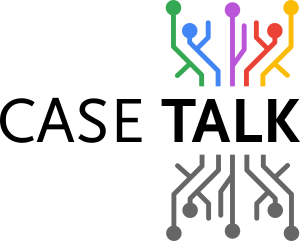Nov 2017
 We’ve moved the publicly available examples files from our internal download pages to GitHub. They are published using the Creative Commons Attribution License. There you can retrieve them, do as you like with them, and start from there while studying CaseTalk, or starting your own project.
We’ve moved the publicly available examples files from our internal download pages to GitHub. They are published using the Creative Commons Attribution License. There you can retrieve them, do as you like with them, and start from there while studying CaseTalk, or starting your own project.
Modeling the communication about the data as expressed by domain experts can clash with technical oriented viewpoints. For instance the world of reference data and catalogs which might use codes, versus the actual values that bear meaning to the business. This article explores how an example case of preferred pronouns can unite people with different viewpoints.
This example illustrates the recursive capabilities of CaseTalk in a commonly encountered situation: folders and files on a hard-disk.
The reverse engineering creates an elementary CaseTalk model through a simple ADO connection. The tables, columns, key information, and relations are all created as facts and are made to be verbalized. This way, the database model can be validated as a conceptual model following the regular rules.
On many conferences where AI, ML or data science is mentioned, a simple dataset is used to underpin the storyline of the sessions. The Titanic dataset is such a relatively small and simple example. Until now a Fact Oriented Model was absent. So, let's see how we can build one out of the dataset by verbalizing it.


